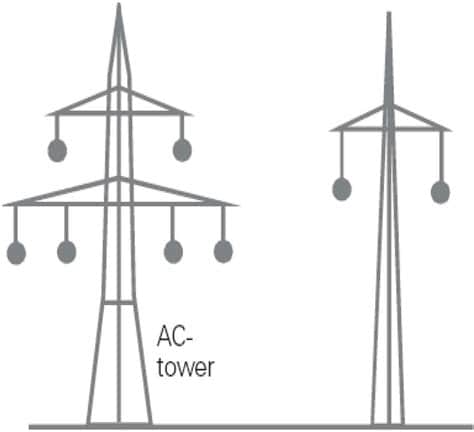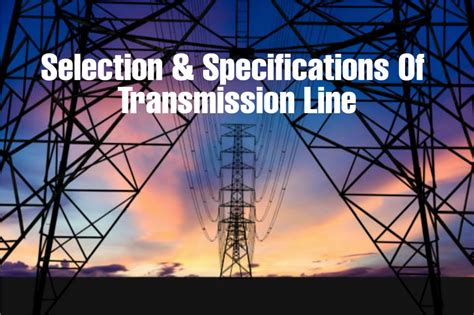Introduction to Transmission Line Types
Transmission lines are essential components in high-frequency electrical systems, as they facilitate the transfer of electromagnetic energy from one point to another. Various types of transmission lines are used in different applications, each with its own set of advantages and disadvantages. This article will explore the pros and cons of the most common high-frequency transmission line types, including coaxial cables, microstrip lines, striplines, and waveguides.
Coaxial Cables
Coaxial cables, or coax cables, are widely used in high-frequency applications due to their simple construction and versatility. They consist of an inner conductor surrounded by a dielectric insulator, which is then encased in an outer conductor and a protective jacket.
Advantages of Coaxial Cables
- Wide bandwidth: Coaxial cables support a wide range of frequencies, making them suitable for various applications.
- Low loss: Coaxial cables exhibit relatively low loss compared to other transmission line types, especially at lower frequencies.
- Flexibility: Coaxial cables are flexible and can be easily routed through tight spaces or bent around corners.
- Shielding: The outer conductor provides excellent shielding against electromagnetic interference (EMI) and radio frequency interference (RFI).
Disadvantages of Coaxial Cables
- Limited power handling: Coaxial cables have limited power handling capabilities compared to other transmission line types, such as waveguides.
- Frequency limitations: As the frequency increases, the loss in coaxial cables also increases, limiting their effectiveness at very high frequencies.
- Connector complexity: Coaxial cable connectors can be complex and require precise assembly to ensure proper performance.
Common Applications of Coaxial Cables
- Radio frequency (RF) systems
- Television and cable distribution
- Ethernet networks
- Antenna feedlines

Microstrip Lines
Microstrip lines are planar transmission lines commonly used in printed circuit board (PCB) designs. They consist of a conductive strip separated from a ground plane by a dielectric substrate.
Advantages of Microstrip Lines
- Ease of fabrication: Microstrip lines can be easily fabricated using standard PCB manufacturing techniques.
- Integration with active components: Microstrip lines allow for easy integration with active components, such as transistors and ICs, on the same PCB.
- Compact size: Microstrip lines have a compact form factor, making them suitable for space-constrained applications.
Disadvantages of Microstrip Lines
- Dispersion: Microstrip lines suffer from dispersion, which can cause signal distortion at high frequencies.
- Limited isolation: Microstrip lines provide limited isolation between adjacent traces, leading to potential crosstalk issues.
- Radiation losses: Microstrip lines are prone to radiation losses, especially at higher frequencies, which can reduce overall efficiency.
Common Applications of Microstrip Lines
- Microwave integrated circuits (MICs)
- Radar systems
- Wireless communication devices
- High-speed digital circuits

Striplines
Striplines are another type of planar transmission line, similar to microstrip lines, but with the conductive strip sandwiched between two ground planes and embedded in a dielectric substrate.
Advantages of Striplines
- Improved isolation: Striplines offer better isolation between adjacent traces compared to microstrip lines, reducing crosstalk.
- Reduced radiation losses: The dual ground plane configuration of striplines minimizes radiation losses, improving overall efficiency.
- Consistent impedance: Striplines maintain a more consistent characteristic impedance across the frequency range compared to microstrip lines.
Disadvantages of Striplines
- Increased fabrication complexity: Striplines require a more complex fabrication process compared to microstrip lines, as they are embedded within the substrate.
- Limited access to the center conductor: Access to the center conductor of a stripline is limited, making it more challenging to integrate with active components.
- Increased substrate thickness: Striplines require a thicker substrate compared to microstrip lines, which can increase the overall size of the PCB.
Common Applications of Striplines
- High-speed digital circuits
- Microwave filters and couplers
- Radar systems
- Aerospace and defense applications

Waveguides
Waveguides are hollow metallic structures that guide electromagnetic waves along their length. They are commonly used in high-frequency applications where low loss and high power handling are required.
Advantages of Waveguides
- Low loss: Waveguides exhibit very low loss, especially at high frequencies, making them ideal for long-distance signal transmission.
- High power handling: Waveguides can handle high power levels without experiencing significant losses or damage.
- Excellent shielding: The closed structure of waveguides provides excellent shielding against EMI and RFI.
Disadvantages of Waveguides
- Bulky size: Waveguides are relatively large and bulky compared to other transmission line types, making them less suitable for compact applications.
- Limited bandwidth: Waveguides have a limited bandwidth, as they are designed to operate in specific frequency ranges.
- High cost: Waveguides are generally more expensive to manufacture and install compared to other transmission line types.
Common Applications of Waveguides
- Radar systems
- Satellite communication
- High-power microwave devices
- Radio astronomy
Comparison Table
| Transmission Line Type | Bandwidth | Loss | Power Handling | Size | Cost |
|---|---|---|---|---|---|
| Coaxial Cable | Wide | Low | Limited | Flexible | Moderate |
| Microstrip Line | Moderate | Moderate | Moderate | Compact | Low |
| Stripline | Moderate | Low | Moderate | Compact | Moderate |
| Waveguide | Limited | Very Low | High | Bulky | High |
Frequently Asked Questions (FAQ)
-
Q: What is the main difference between coaxial cables and microstrip lines?
A: Coaxial cables are cylindrical, with an inner conductor surrounded by a dielectric insulator and an outer conductor, while microstrip lines are planar, consisting of a conductive strip separated from a ground plane by a dielectric substrate. -
Q: Which transmission line type is best suited for high-power applications?
A: Waveguides are best suited for high-power applications due to their ability to handle high power levels without experiencing significant losses or damage. -
Q: Why are striplines preferred over microstrip lines in some cases?
A: Striplines offer better isolation between adjacent traces and reduced radiation losses compared to microstrip lines, making them preferred in applications where crosstalk and efficiency are critical. -
Q: Can coaxial cables be used at very high frequencies?
A: While coaxial cables can support a wide range of frequencies, their effectiveness is limited at very high frequencies due to increasing losses. -
Q: What are the primary factors to consider when selecting a transmission line type for a specific application?
A: The primary factors to consider when selecting a transmission line type include bandwidth requirements, loss tolerance, power handling needs, size constraints, and cost.
Conclusion
In summary, each high-frequency transmission line type has its own set of advantages and disadvantages, making them suitable for different applications. Coaxial cables are versatile and widely used, while microstrip lines and striplines are compact and easily integrated into PCB designs. Waveguides excel in low-loss, high-power applications but are bulky and costly.
When selecting a transmission line type for a specific application, it is essential to consider factors such as bandwidth, loss, power handling, size, and cost. By understanding the pros and cons of each transmission line type and their common applications, engineers and designers can make informed decisions to optimize the performance of their high-frequency systems.

No responses yet